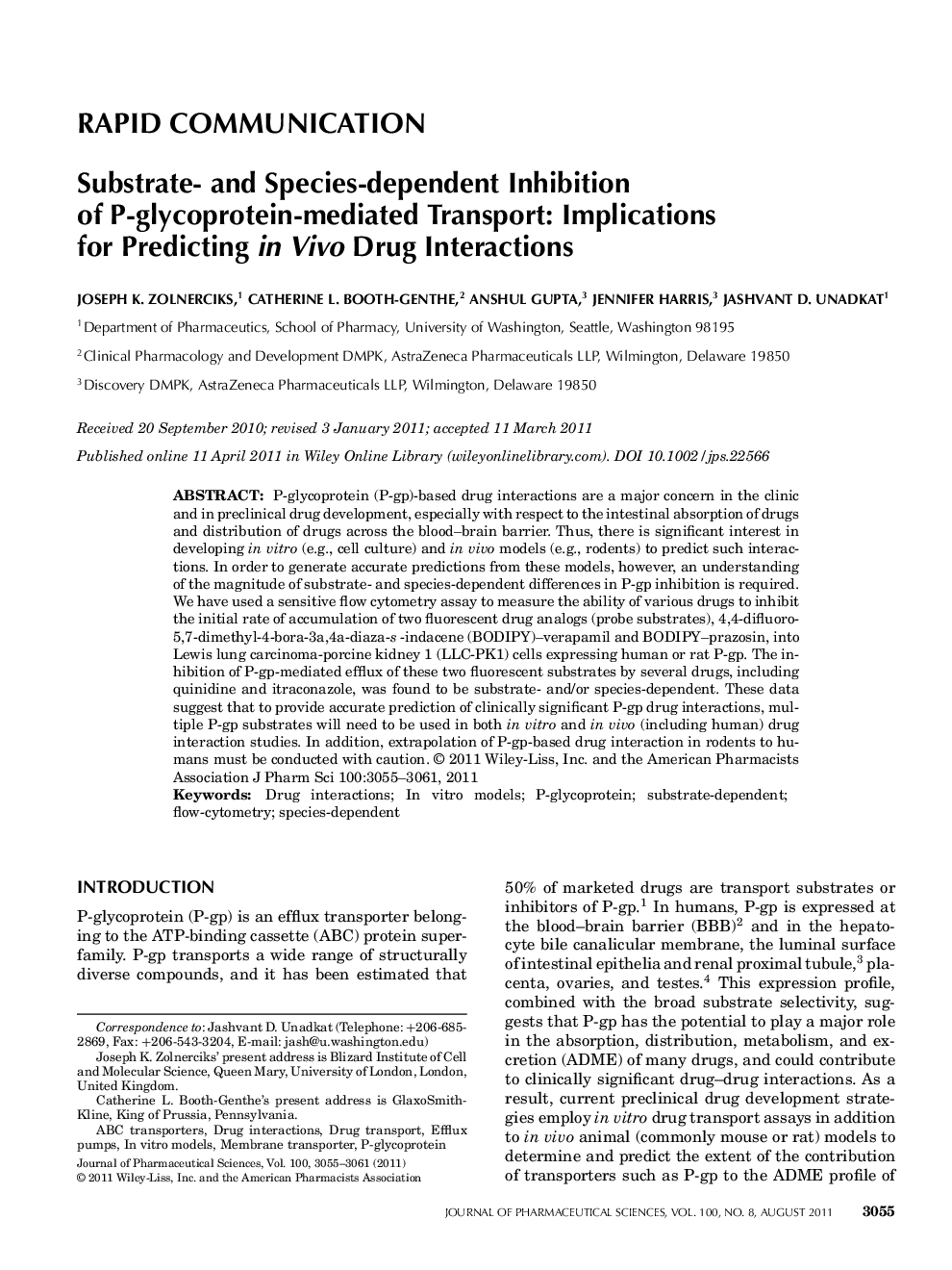| Article ID | Journal | Published Year | Pages | File Type |
|---|---|---|---|---|
| 2486324 | Journal of Pharmaceutical Sciences | 2011 | 7 Pages |
Abstract
Pâglycoprotein (Pâgp)âbased drug interactions are a major concern in the clinic and in preclinical drug development, especially with respect to the intestinal absorption of drugs and distribution of drugs across the blood-brain barrier. Thus, there is significant interest in developing in vitro (e.g., cell culture) and in vivo models (e.g., rodents) to predict such interactions. In order to generate accurate predictions from these models, however, an understanding of the magnitude of substrateâ and speciesâdependent differences in Pâgp inhibition is required. We have used a sensitive flow cytometry assay to measure the ability of various drugs to inhibit the initial rate of accumulation of two fluorescent drug analogs (probe substrates), 4,4âdifluoroâ5,7âdimethylâ4âboraâ3a,4aâdiazaâs âindacene (BODIPY)-verapamil and BODIPY-prazosin, into Lewis lung carcinomaâporcine kidney 1 (LLCâPK1) cells expressing human or rat Pâgp. The inhibition of Pâgpâmediated efflux of these two fluorescent substrates by several drugs, including quinidine and itraconazole, was found to be substrateâ and/or speciesâdependent. These data suggest that to provide accurate prediction of clinically significant Pâgp drug interactions, multiple Pâgp substrates will need to be used in both in vitro and in vivo (including human) drug interaction studies. In addition, extrapolation of Pâgpâbased drug interaction in rodents to humans must be conducted with caution. © 2011 WileyâLiss, Inc. and the American Pharmacists Association J Pharm Sci 100:3055-3061, 2011
Related Topics
Health Sciences
Pharmacology, Toxicology and Pharmaceutical Science
Drug Discovery
Authors
Joseph K. Zolnerciks, Catherine L. BoothâGenthe, Anshul Gupta, Jennifer Harris, Jashvant D. Unadkat,
